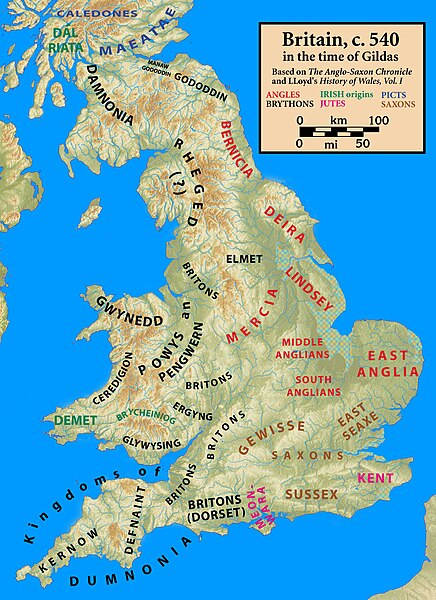The Battle of Maserfield, a corruption of the Welsh Maes Elferth was fought on 5 August 641 or 642 between the Anglo-Saxon kings Oswald of Northumbria and Penda of Mercia allied with Welsh Kingdom of Gwynedd, ending in Oswald's defeat, death, and dismemberment. The location was also known as Cogwy in Welsh, with Welshmen from Pengwern participating in the battle, probably as allies of the Mercians. Bede reports the commonly accepted date given above; the Welsh Annales Cambriae is generally considered incorrect in giving the year of the battle as 644. The site of the battle is traditionally identified with Oswestry.
A twelfth-century painting of St Oswald, killed at Maserfield, in Durham Cathedral
History of Anglo-Saxon England
Anglo-Saxon England or Early Medieval England, existing from the 5th to the 11th centuries from soon after the end of Roman Britain until the Norman Conquest in 1066, consisted of various Anglo-Saxon kingdoms until 927, when it was united as the Kingdom of England by King Æthelstan. It became part of the short-lived North Sea Empire of Cnut, a personal union between England, Denmark and Norway in the 11th century.
Britain around the year 540. Anglo-Saxon kingdoms' names are coloured red. Britonnic kingdoms' names are coloured black.
Escomb Church, a restored 7th-century Anglo-Saxon church. Church architecture and artefacts provide a useful source of historical information.
Whitby Abbey
The walled defence round a burgh. Alfred's capital, Winchester. Saxon and medieval work on Roman foundations.





